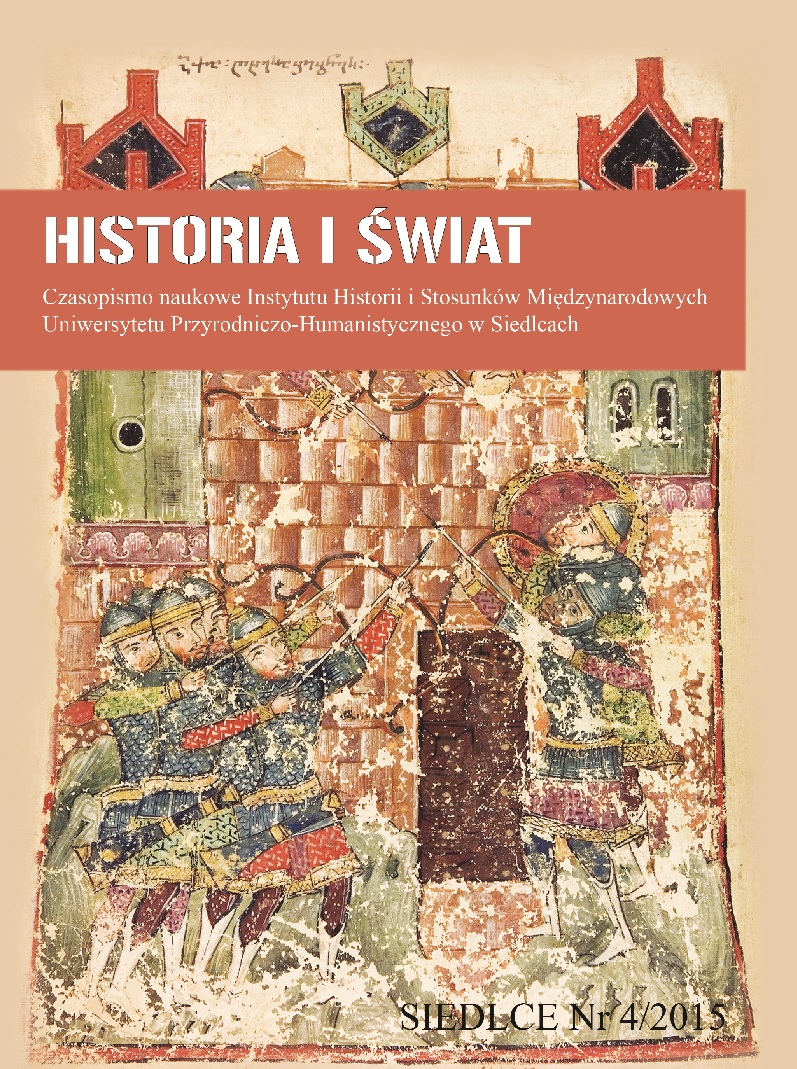Иранские шлемы «кула-худ» в комплексе защитного вооружения тюркских кочевников Центральной Азии XVII–XIX вв.
Iranian „kula-hud” helmets in the panoply of Turkic nomads of Central Asia in 17-19th centuries
Author(s): Leonid BobrovSubject(s): History, Military history, Modern Age
Published by: Instytut Historii UwS
Keywords: Iranian helmets; equipment; Turkic nomads; Central Asia
Summary/Abstract: The article considers the topic of the evolution of Iranian „kula-hud” helmets, theirconstruction and decorations system in the perspective of their employment by Turkicnomads of Central Asia. Basing on thorough analyze of the sources it was proved that the„kula-hud” helmet type was created on the foundation of the helmets manufactured fromone-piece of metal from Near East in high Middle Ages. „Kula-hud” were originally formedby adding a moveable nasal, two sockets at the temples and a sharp spike at the top ofhemispherical body. Chain mail aventail was also added. Early variants of the helmets ofthis type (proto-kula-hud) can be found as early as 16th century and should be linked withthe reform of Iranian protective armament by the first Safavids. In 17th century „kula-hud”helmets were spread widely not only in Iran and India but also in Turkic states of CentralAsia. An important factor in popularization of „kula-hud” was its relation with otherweaponry (archery, sabers) and the tactics of the peoples of the area.The analyze of „kula-hud” helmets from Central Asia allowed to state that themajority of them are the imports from Iran. Part of the helmets was manufactured by thelocal masters according to Iranian patterns. The modification of some traditional rivetedsegmented helmets proves high prestige of Iranian armament among Turkic nomads of thearea.
Journal: Historia i Świat
- Issue Year: 2015
- Issue No: 4
- Page Range: 205-219
- Page Count: 15
- Language: Russian

